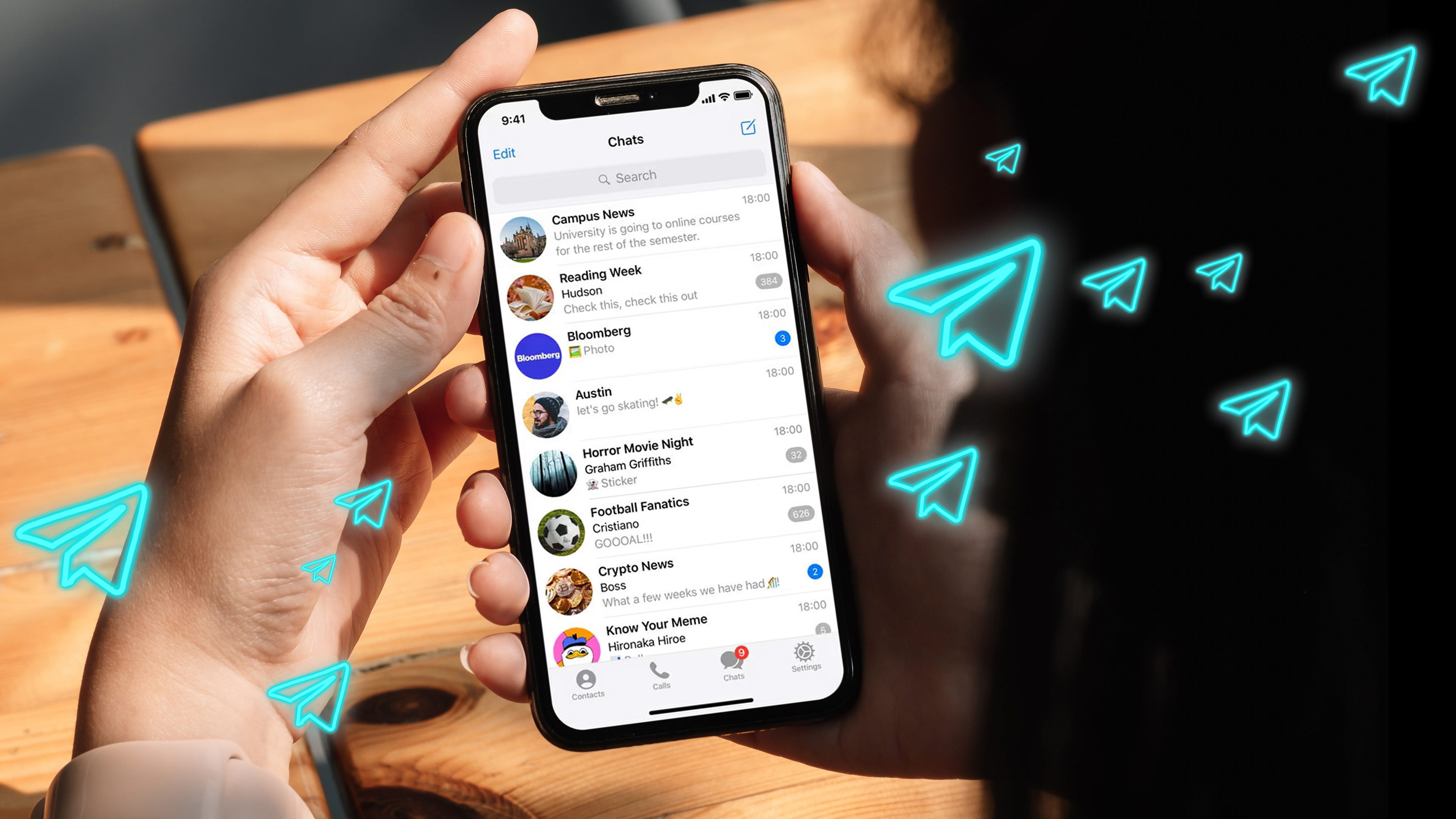Telegram close by users: join sooner with secure MTProto chats today
The Telegram Nearby Users characteristic is a powerful device built-in throughout the Telegram messaging ecosystem that leverages geolocation data to connect customers primarily based on bodily proximity. This performance empowers individuals to find, talk, and build connections with people in their instant surroundings, transcending traditional contact discovery methods reliant solely on usernames or telephone numbers. More than just a novelty, Telegram Nearby Users it addresses practical wants similar to increasing social networks, enhancing local community engagement, or facilitating real-time coordination throughout events, all whereas anchoring its operations inside Telegram's strict protocols for privacy and security.
Understanding the Mechanism Behind Telegram Nearby Users
To appreciate the full spectrum of benefits and limitations of the Telegram Nearby Users functionality, it's important to know the means it operates inside the app's structure.
Geolocation Data Processing and Accuracy
Telegram faucets into the device’s internal GPS and other location companies to ascertain the user's place. Unlike some much less refined location-sharing apps, Telegram does not continually transmit raw GPS coordinates to its servers. Instead, it makes use of an optimized algorithm that computes an approximated location segment, enhancing privacy by sharing much less exact place knowledge whereas preserving the performance of proximity-based discovery.
This method balances usability and safety by decreasing exposure to real-time tracking vulnerabilities. The accuracy typically ranges inside tens of meters, adequate for figuring out customers in the same venue, neighborhood, or event but avoiding pinpoint exactness.
Real-time Discovery and Update Frequency
The mechanism checks and refreshes the close by users' listing dynamically, adapting to users’ movements. This real-time performance helps eventualities corresponding to conferences, meetups, or public occasions, the place the viewers composition modifications rapidly. The refresh cadence is fastidiously tuned to minimize battery consumption and restrict frequent knowledge transmission that would improve privacy risks. Telegram’s engineering prioritizes efficient use of community sources to maintain fluid person expertise with out compromising security.
Integration with Telegram’s Contact and Privacy Systems
Nearby Users integrates profoundly with Telegram’s existing contact management framework. Users can select whether or not to appear within the "Nearby" listing, providing granular opt-in control. This ensures that privateness preferences are respected, allowing individuals to remain discoverable only when explicitly desired. Privacy configurations such as blocking, reporting, and make contact with restrictions apply as usual, including familiar safeguards to proximity discovery.
This synergy with Telegram’s complete privacy model delivers a reliable expertise where customers can safely discover local connections with out fearing invasive publicity or unsolicited contact.
Addressing Privacy and Security Concerns with Telegram Nearby Users
Since location-based services inherently expose delicate knowledge, deconstructing Telegram Nearby Users’ privacy structure reveals why it is appropriate even for privacy-conscious users.
End-to-End Encryption and Data Minimization
Unlike many prompt messaging apps, Telegram employs diversified encryption layers — standard cloud chats utilize client-server encryption, while secret chats adopt sturdy end-to-end encryption. Although location sharing in Nearby Users does not occur within secret chats, Telegram’s minimal retention of geolocation knowledge aligns with the precept of knowledge minimization, reducing potential misuse.
Geodata is encrypted throughout transmission utilizing industry-standard TLS (Transport Layer Security), stopping interception by third events. Telegram’s servers receive anonymized or aggregated location markers, not steady streams of precise GPS information, which might pose greater privacy risks. This upholds a meaningful barrier towards state-level surveillance or malicious assault vectors focusing on person location.
User Consent and Control Over Visibility
Users activate Nearby Users explicitly; it's not enabled by default, preventing unintentional location publicity. Additionally, the looks in proximity outcomes could be fine-tuned via settings such as:
- Defining visibility period in the close by listing.
- Controlling who can see the person based mostly on mutual contacts.
- Rejecting or blocking unknown users instantly.
These features empower users to circumvent widespread anxieties related to stalking, unwanted solicitation, or location-based profiling, transforming the expertise into an opt-in and adjustable tool quite than an intrusive surveillance mechanism.
Mitigating Risks of Location Spoofing and Malicious Use
While Telegram does not natively assure absolute location authenticity, the platform’s design limits damage by stopping mass scraping of profile info and allowing fast reporting and blocking of suspicious accounts. The network actively encourages community policing mechanisms to take care of a secure setting around the Nearby Users feature.
Practical Advantages of Telegram Nearby Users for Different Use Cases
Moving past theoretical concerns, the Telegram Nearby Users function delivers tangible advantages across varied private and professional situations.
Enhanced Social Networking and Local Discovery
Users seeking to expand their social circles or meet native communities find Telegram Nearby Users especially priceless. Unlike conventional friend-finding apps, this feature aligns with Telegram’s broader platform strengths: safe messaging, multimedia sharing, and group capabilities.
By discovering customers inside strolling distance or at a shared location, such as a café or convention, people can provoke conversations instantly with out exchanging telephone numbers. This reduces friction, boosting receptivity and spontaneous interplay, which is more durable to attain with traditional username searches.
Facilitating Event Coordination and Business Networking
Event organizers and members can leverage Nearby to foster real-time collaboration. Whether it’s a commerce present, hackathon, or social gathering, the characteristic permits attendees to pinpoint peers, collaborators, or audio system just by opening Telegram and glancing on the close by list. This spontaneous connection circumvents the need for pre-existing contact exchanges or third-party apps.
Moreover, companies or professionals can use Nearby to determine native clients or companions, paving pathways for on-site networking that is simpler and contextually meaningful than generic digital outreach.
Supporting Emergency Situations and Local Help Discovery
In emergencies, the power to seek out and talk with users nearby may be life-saving. Whether coordinating neighborhood watch initiatives, in search of help throughout natural disasters, or discovering first responders, Telegram Nearby Users provides a speedy, secure vector to identify nearby contacts keen to assist.
This feature can also serve these new to an space, facilitating local integration through direct contact with close by residents or help networks, enhancing community resilience.
Limitations and Challenges in Using Telegram Nearby Users
While the performance brings innovative advantages, it additionally faces inherent limitations and user experience challenges that callers should pay consideration to to set practical expectations.
Dependency on Location Services and User Adoption
The effectiveness of Nearby Users depends on both parties enabling location permissions and activating the function concurrently. In areas with decrease adoption or among customers hesitant to share location, discovery charges significantly decrease.
Additionally, restrictions posed by device-level settings or working system privateness policies may inhibit Telegram’s ability to access or process location knowledge accurately, which can degrade the feature’s responsiveness and relevance.
Privacy Trade-offs and User Hesitance
Despite transparency and control, some customers stay uncomfortable with proximity-based visibility, stemming from reliable privateness issues. This hesitance could result in underuse or inactive adoption, limiting the potential network impact.
Businesses counting on Nearby may additionally face difficulties reaching goal audiences if users decide out or use spoofing tools to masks location.
Technical Constraints and Battery Usage
Location providers are sometimes contributors to battery drain. Although Telegram optimizes data acquisitions for minimal influence, continuous background updates required for Nearby can cut back gadget endurance, particularly in older smartphones or gadgets with constrained sources.
Users in regions with intermittent internet connectivity can also encounter inconsistent Nearby user lists, diminishing usability during critical moments.
Maximizing Benefits and Best Practices for Using Telegram Nearby Users
Adopting practical methods can help customers and organizations harness the complete potential of this characteristic whereas mitigating related dangers.
Optimizing Privacy Settings for a Balanced Experience
Users should periodically review and adjust their location visibility settings, defining time frames and viewers scope. Leveraging Telegram’s block and report instruments strengthens protections in opposition to unwanted contacts, ensuring a curated and safe discovery experience.
For delicate scenarios, pairing Telegram’s secret chat perform with Nearby utilization can phase personal conversations from location sharing, sustaining confidentiality where essential.
Encouraging Responsible and Secure Usage at Events and Organizations
Event organizers should communicate clear pointers on activating Nearby and respecting person privacy, telegram nearby users perhaps through introductory onboarding or digital signage. Establishing devoted Telegram teams linked with Nearby discovery can streamline participant interactions, combining discovery with structured communication.
Regularly updating attendees on the method to use the feature responsibly sustains belief and encourages adoption.
Leveraging Telegram’s API and Bots for Enhanced Local Interaction
Developers can build Telegram bots or companies that combine with Nearby Users to automate matchmaking, native bulletins, or support methods. This advanced approach leverages Telegram’s extensibility to create tailored local experiences, increasing usefulness without compromising core privateness assumptions.
Summary and Actionable Recommendations for Harnessing Telegram Nearby Users
Telegram Nearby Users is a strategically designed function that balances revolutionary proximity-based discovery with strong privateness and security commitments. It addresses real person wants for environment friendly local networking, event coordination, and emergency communication whereas minimizing common dangers associated with geolocation sharing.
To maximize its advantages, users ought to actively manage privateness controls, remain aware of operational constraints similar to adoption rates and battery influence, and discover integrations that complement their specific use circumstances. Organizations and occasion hosts can amplify the feature’s value by fostering user training and embedding Nearby within broader communication methods.

Practical subsequent steps include:
- Enabling Telegram Nearby Users selectively in trusted environments to check local discovery benefits.
- Customizing privateness and visibility settings to match consolation levels and eventualities.
- Participating in or creating local Telegram groups to synchronize with Nearby discovery efforts.
- Exploring Telegram API alternatives to innovate on top of the proximity-based function.
- Monitoring Telegram updates and group suggestions to stay knowledgeable on evolving security and practical enhancements.
By embracing these approaches, customers can transform the Telegram Nearby Users characteristic from a mere gimmick into a vital device for safe, practical, and enriching native digital engagement.




